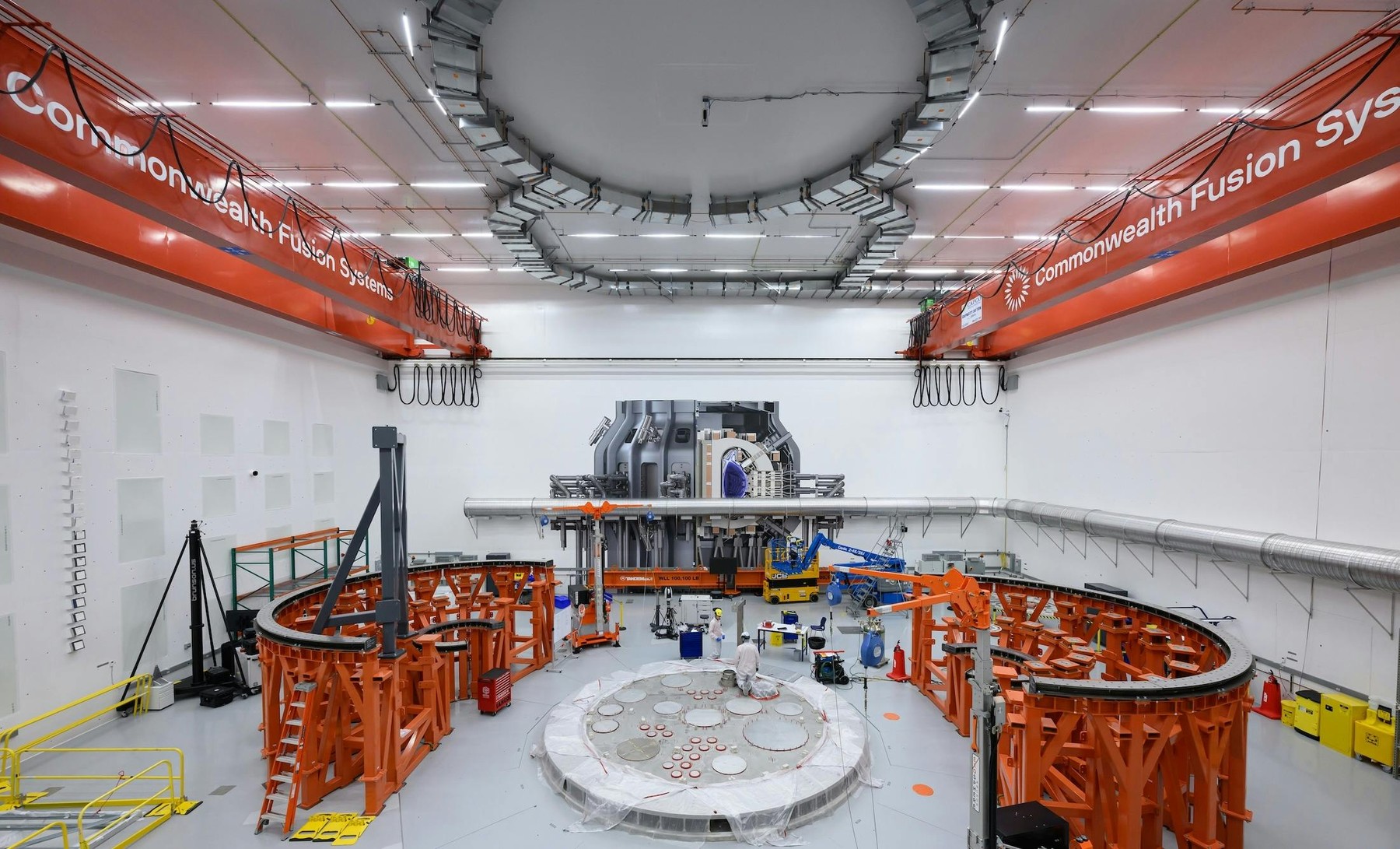Welcome to Climate Tech Pulse, your daily dose of market intelligence helping fuel the fight against climate change. From groundbreaking investments to cutting-edge research, we’re bringing you the latest in climate tech that’s shaping our future.
Don’t miss out on tomorrow’s climate solutions – subscribe now to stay ahead of the curve! https://lnkd.in/dwr7B9XJ
Today’s newsletter:

🔝Today’s Top Story: Morgan Stanley Investment Management (MSIM) has successfully closed its 1GT climate-focused private equity fund, raising $750 million in equity commitments.
📊 Today’s Data Point: The IEA’s State of Energy Policy report’s analysis of evolving energy policy landscape.
🌳 Climate Insider Intelligence: 25 Climate Tech Influencers to Know in 2024.
Morgan Stanley Closes $750M 1GT Climate Fund to Drive Carbon Removal and Reduction Across North America and Europe
Image Credit: Morgan Stanley
1GT Fund: Targeting Gigaton-Scale Carbon Impact
Morgan Stanley Investment Management (MSIM) has successfully closed its 1GT climate-focused private equity fund, raising $750 million in equity commitments. The fund aims to achieve a one-gigaton carbon reduction or removal by 2050 through investments in growth-stage companies across North America and Europe. This milestone reflects the growing momentum of carbon removal technologies in the climate tech space.
Investing in Carbon Removal Technologies
The fund focuses on carbon removal and reduction solutions, including direct air capture, enhanced rock weathering, and biochar. These emerging technologies provide alternatives to more established renewables like solar and wind, attracting investors eager to diversify their climate impact portfolios. The rapid growth of these innovations has sparked increasing interest from those seeking scalable climate solutions.
Performance-Linked Incentives and Strategic Vision
A unique aspect of the 1GT fund is its performance-linked financial incentives, with half of the team’s compensation tied to meeting the gigatonne target by 2050. Vikram Raju, Head of Climate Private Equity Investing at MSIM, emphasized the fund’s tangible and transparent climate goals, while David N. Miller highlighted the firm’s ability to deliver both strong returns and impactful climate solutions to its investees. Read More
Market Movers
- Blue Energy emerged from stealth with a $45 million Series A to advance its modular nuclear power plant, which can be built in shipyards, reducing costs and making nuclear power more competitive with fossil fuels and renewables. Read More
- Diagram Ventures closed its first ClimateTech Fund at $80 million CAD, surpassing its target with backing from Sagard, Investissement Québec, and other prominent investors, positioning itself to expand beyond FinTech into the climate tech space despite challenging VC market conditions. Read More
- Molg Inc. raised $5.5 million in seed funding to scale its circular manufacturing for electronics, addressing the urgent need to recover critical minerals from e-waste and support the clean energy transition, as only 22.3% of e-waste was recycled in 2022, leaving valuable materials unrecovered. Read More
- The PtX Development Fund approved its first grant of €30 million for Egypt Green Hydrogen’s project in the Suez Canal Economic Zone, marking a major step in promoting hydrogen projects in developing economies and supporting clean energy development in Egypt’s largest industrial cluster. Read More
Tech Spotlight
Arizona State University’s EPIXC Initiative: Electrifying Industrial Processes to Slash CO2 Emissions
Source: Arizona State University, U.S.
Arizona State University’s Electrified Processes for Industry Without Carbon (EPIXC) is spearheading an initiative to cut CO2 emissions by up to 60 million metric tons over the next 15 years. This DOE-funded effort targets industrial process heating, which accounts for nearly half of U.S. industrial emissions. EPIXC’s focus is on replacing fossil fuel-based heating with electrified, cost-effective technologies, while simultaneously addressing workforce development and community engagement.
Commercial Viability
Market Impact:
The shift to electrified heating technologies is projected to revolutionize industrial sectors, particularly in heavy industries like steel, chemical production, and cement manufacturing. Traditional fossil-fuel-based heating methods contribute significantly to greenhouse gas emissions, but these new electric systems aim to slash emissions across multiple sectors. The goal is not just technological innovation but the integration of electrified solutions into existing facilities, ensuring a broad market application. The selected projects encompass $11.8 million in total investment, positioning them to influence the manufacturing landscape significantly.
Cost-Effectiveness:
EPIXC’s initiative seeks to overcome the piecemeal nature of existing solutions by creating comprehensive systems that can be deployed across various industries. By leveraging renewable energy, these efforts aim to lower operational costs, improve process efficiencies, and cut down emissions drastically. However, challenges remain in ensuring these systems are competitive with fossil-fuel-based technologies, especially in terms of scalability and upfront investment.
Technical Viability
Technology Challenges:
The complexity of electrifying industrial processes is vast, with heating requirements ranging from 100°C to 1,400°C, depending on the industry. The selected projects explore technologies such as atmospheric microwave plasma (AMP) systems for steelmaking and electrified kilns for cement production, both of which have the potential to replace carbon-intensive methods. Yet, the challenge lies in retrofitting these technologies to existing infrastructure, especially in industries reliant on continuous, high-temperature heating processes.
Efficiency Considerations:
EPIXC’s test beds aim to validate the performance and integration of these electrified systems, focusing on operational efficiencies. For instance, in the steel sector, traditional hot rolling relies on natural gas, which emits nearly 2 metric tons of CO2 per ton of steel. Replacing this with AMP heating could drastically cut emissions while maintaining production efficiencies. The research also seeks to enhance catalyst use in the chemical sector to improve energy yield in processes like propane dehydrogenation.
Environmental Viability
Sustainability Alignment:
By targeting high-emission sectors like steel and cement, EPIXC aligns itself with the broader goal of reducing the carbon footprint of critical industrial processes. The electrification of these industries, especially with renewable energy sources, promises significant sustainability benefits. For example, electrifying cement kilns could reduce emissions by more than 70%, a critical step in decarbonizing an industry responsible for 8% of global CO2 emissions.
Climate Impact:
The potential reduction in emissions across these sectors is substantial. For example, the electrification of distillation processes in the chemical industry could reduce CO2 emissions by 37,000 tons annually. Similarly, the electrification of steel production could prevent up to 1.94 metric tons of CO2 emissions per ton of steel. If widely adopted, these technologies could offer near-term climate benefits, but their success will depend on scaling them efficiently.
Scaling Potential
Investment Strategies:
EPIXC’s success hinges on a collaborative investment approach, integrating both federal and private sector funding to scale electrified process heating technologies. These technologies are being positioned to decarbonize industries across a wide range of applications, including steel, cement, and chemicals. However, scaling will require continued investments in research and development, as well as incentives for industries to adopt these new systems.
Future Expansion:
Electrification of industrial processes holds promise for hard-to-abate sectors like steel and cement, where alternative decarbonization methods are limited. The AMP system for steel hot rolling and electrified calciner for cement production are key examples of breakthrough technologies with high scaling potential. However, expansion will depend on further innovations in grid reliability and energy storage, ensuring that electrified systems can operate without interruption from renewable energy sources.
Long-Term Implications
Reevaluating Industrial Decarbonization:
EPIXC’s approach challenges the traditional reliance on fossil fuels in industrial processes, particularly the reliance on natural gas for high-temperature heating. By electrifying these processes, the initiative aims to create a more sustainable industrial sector. The long-term goal is to develop comprehensive, integrated systems that can be widely adopted, cutting emissions and driving the transition to clean energy.
Strategic Vision for Growth:
A diversified strategy is crucial for long-term decarbonization, with investments in multiple sectors and technologies. As EPIXC’s projects mature, they will provide critical data and insights that could guide the industrial sector toward widespread electrification. However, as Sridhar Seetharaman notes, the true potential of these innovations will only be realized if knowledge gaps are addressed and investments are made at the systems level. Read More
Policy Pulse
This section includes global updates on climate change policy, governance and regulation.
Government advances Made-in-Canada sustainable investment guidelines and mandatory climate disclosures to accelerate progress to net-zero emissions by 2050.
The Canadian government is advancing its net-zero goal by 2050 through a comprehensive $93 billion tax credit plan to attract clean investment, coupled with a forthcoming sustainable finance taxonomy and mandatory climate-related disclosures for private companies, aimed at providing market certainty and aligning economic activities with global climate targets.
Why it Matters: This policy matters because it provides the financial incentives, regulatory clarity, and investment guidelines necessary to attract private capital and accelerate Canada’s transition to a net-zero economy, while ensuring alignment with global climate goals. Read More
Today’s Climate Data Point
The International Energy Agency (IEA) has released its inaugural State of Energy Policy report, analyzing the significant energy policy changes over the past four years. The report underscores the impact of recent global events, particularly the COVID-19 pandemic and Russia’s invasion of Ukraine, on energy security and clean energy investments. Since 2020, close to 150 countries have adopted more ambitious climate commitments, leading to a 60% increase in clean energy investments globally.
Key Findings:
- Investment Surge: Governments have allocated over USD 2 trillion in clean energy investments since 2020, nearly tripling the commitments made in response to the 2007-08 financial crisis. This funding is predominantly concentrated in China, the European Union, and the United States.
- Energy Price Challenges: In 2022, energy prices peaked due to geopolitical tensions, resulting in record total expenditures of USD 10 trillion. Governments provided USD 940 billion in short-term consumer support, particularly in Europe, to manage affordability.
- Supply Chain Security: There is a heightened focus on securing clean energy supply chains, as 80% of manufacturing capacity for key technologies (solar PV, wind, batteries) is concentrated in just three countries. Direct government support for domestic manufacturers rose to USD 170 billion over the last four years.
- Regulatory Developments: Recent policy shifts have led to new energy performance regulations covering three-quarters of global energy-related CO2 emissions. G20 countries are updating energy codes and standards, significantly impacting various sectors.
Implications:
- Need for Diverse Policies: Governments must adopt diverse measures to ensure energy security while promoting sustainability and competitiveness.
- Effective Regulation: Current Nationally Determined Contributions (NDCs) are insufficient to meet long-term climate goals, highlighting the need for stronger regulatory frameworks.
Conclusion
The IEA’s State of Energy Policy report provides a comprehensive overview of the evolving energy policy landscape, emphasizing the need for collaborative efforts and effective regulations to balance clean energy transitions with energy security. The insights gleaned from this report will be vital for future policymaking and international climate commitments.
Climate Insider Analysis
The report illustrates the dynamic interplay between energy security, clean energy investment, and regulatory changes. As countries navigate these challenges, a cohesive strategy that encompasses diverse policies and emphasizes supply chain security will be essential for achieving long-term climate objectives. Read More
Climate Insider Intelligence: 25 Climate Tech Influencers to Know in 2024
🌍 Meet the Climate Tech Game-Changers of 2024! 🌍
From revolutionizing energy efficiency to reshaping corporate sustainability, these influencers are driving the climate tech movement. Visionaries like Jean-Pascal Tricoire (Schneider Electric), Roger Atkins (Electric Vehicles Outlook), Dr. Katharine Hayhoe (The Nature Conservancy), and Bernard Looney (bp) are leading the charge. Explore how they, along with Mark Carney (UN Special Envoy), and Christian Bruch (Siemens Energy), are spearheading innovative solutions to combat climate change in our Climate Insider list of 25 top influencers you need to follow in 2024! 🌱








